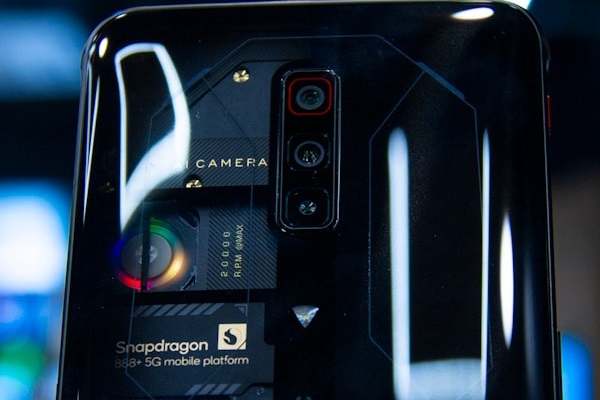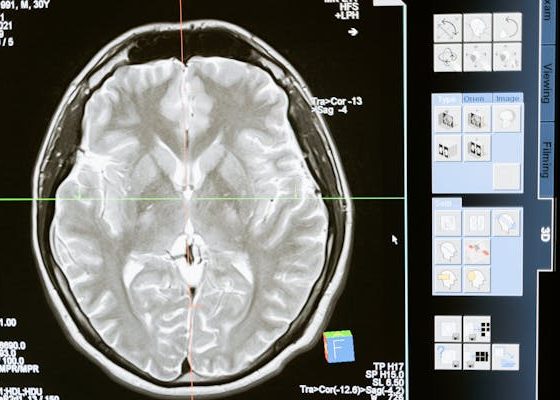
The mobile industry has been evolving at a breathtaking pace, with advancements in hardware and software continuously pushing the boundaries of what’s possible. Central to this evolution is the CPU (Central Processing Unit), the heart of every smartphone. For Android devices, the CPU plays a crucial role in determining performance, efficiency, and user experience. This article delves into the latest CPU of Android, exploring its architecture, features, performance metrics, and its impact on the future of mobile technology.
Understanding CPU Architecture
Before diving into the specifics of the latest CPU of Android, it’s essential to understand the basics of CPU architecture. The CPU is essentially the brain of the device, executing instructions from software to perform various tasks. Modern mobile CPUs are highly complex, incorporating multiple cores, advanced cache hierarchies, and specialized processing units to handle diverse workloads.
Evolution of Android CPUs
Over the years, Android CPUs have undergone significant transformations. From single-core processors to today’s multi-core giants, the journey has been marked by continuous improvements in processing power, energy efficiency, and integration of AI capabilities. Companies like Qualcomm, MediaTek, Samsung, and HiSilicon have been at the forefront of these advancements, each contributing to the competitive landscape of Android CPUs.
The Latest CPU of Android: Snapdragon 8 Gen 3
The latest CPU of Android, as of 2024, is the Qualcomm Snapdragon 8 Gen 3. This powerhouse represents the pinnacle of mobile processing technology, offering unprecedented performance and efficiency. Let’s delve into the key features and innovations that make the Snapdragon 8 Gen 3 stand out.
1. Advanced 4nm Process Technology
One of the most significant advancements in the Snapdragon 8 Gen 3 is its manufacturing process. Built on TSMC’s cutting-edge 4nm process technology, this CPU offers improved performance and energy efficiency compared to its predecessors. The smaller node size allows for more transistors to be packed into the same area, resulting in higher processing power and lower power consumption.
2. Octa-Core Architecture
The Snapdragon 8 Gen 3 features an octa-core architecture, comprising a mix of high-performance and efficiency cores. This configuration typically includes:
- 1x Cortex-X4 Prime Core: Running at up to 3.2 GHz, this core handles the most demanding tasks, ensuring smooth performance in intensive applications and gaming.
- 3x Cortex-A715 Performance Cores: Clocked at 2.8 GHz, these cores provide robust performance for everyday tasks while maintaining energy efficiency.
- 4x Cortex-A510 Efficiency Cores: Operating at 2.0 GHz, these cores are designed for less demanding tasks, contributing to overall power savings.
3. Integrated AI Engine
AI capabilities have become a cornerstone of modern mobile CPUs, and the Snapdragon 8 Gen 3 excels in this area. It features the latest Hexagon AI engine, which offers a substantial boost in AI performance. This engine enables advanced AI features such as real-time language translation, enhanced camera capabilities, and improved voice recognition, making smartphones smarter and more intuitive.
4. Enhanced GPU: Adreno 750
Graphics performance is another critical aspect of mobile CPUs. The Snapdragon 8 Gen 3 comes equipped with the Adreno 750 GPU, which delivers up to 30% faster graphics rendering compared to its predecessor. This improvement translates to smoother gaming experiences, better support for high-refresh-rate displays, and enhanced graphics in augmented reality (AR) applications.
5. Advanced Connectivity
The latest CPU of Android also shines in terms of connectivity. The Snapdragon 8 Gen 3 integrates the Snapdragon X75 5G modem, which supports both mmWave and sub-6 GHz 5G bands. This modem ensures faster download and upload speeds, lower latency, and improved network reliability, paving the way for seamless streaming, gaming, and browsing experiences.
6. Spectra Image Signal Processor (ISP)
Camera technology in smartphones has advanced significantly, and the CPU plays a crucial role in this evolution. The Snapdragon 8 Gen 3 features the Spectra ISP, which supports up to 200-megapixel sensors and 8K video recording. With advanced AI-driven enhancements, this ISP improves image quality, dynamic range, and low-light performance, allowing users to capture stunning photos and videos.
7. Improved Security Features
Security is paramount in today’s digital age, and the Snapdragon 8 Gen 3 incorporates several enhancements to protect user data. The Qualcomm Secure Processing Unit (SPU) provides a hardware-based secure environment for sensitive information, while the new TrustZone technology ensures secure transactions and authentication processes.
Performance Metrics and Benchmarks
To gauge the real-world performance of the latest CPU of Android, it’s essential to look at various benchmarks and performance metrics. The Snapdragon 8 Gen 3 has been subjected to rigorous testing, and the results are impressive across the board.
AnTuTu Benchmark
The AnTuTu benchmark is one of the most widely used tools to measure overall smartphone performance. The Snapdragon 8 Gen 3 consistently scores above 1.2 million points, setting a new standard for Android devices. This score reflects the CPU’s ability to handle intensive tasks, graphics rendering, and multitasking with ease.
Geekbench
Geekbench provides a detailed analysis of CPU performance, focusing on both single-core and multi-core capabilities. The Snapdragon 8 Gen 3 achieves scores of around 1,600 in single-core tests and 5,500 in multi-core tests. These numbers highlight the CPU’s balanced performance, excelling in both individual and parallel processing tasks.
GFXBench
For GPU performance, GFXBench is a reliable benchmark. The Adreno 750 GPU in the Snapdragon 8 Gen 3 delivers exceptional results, achieving high frame rates in demanding graphics tests. This performance ensures that users can enjoy visually stunning games and applications without compromising on smoothness.
Impact on User Experience
The advancements in the latest CPU of Android translate directly to an enhanced user experience. Here’s how the Snapdragon 8 Gen 3 impacts various aspects of smartphone usage:
1. Smoother Multitasking
With its powerful octa-core architecture, the Snapdragon 8 Gen 3 allows for seamless multitasking. Users can switch between apps, browse the web, stream videos, and play games without experiencing any lag or slowdowns. The efficient core management ensures that the CPU dynamically allocates resources based on the task at hand, optimizing performance and battery life.
2. Enhanced Gaming Experience
Mobile gaming has become increasingly popular, and the Snapdragon 8 Gen 3 caters to this trend with its advanced GPU and AI capabilities. Gamers can enjoy high-definition graphics, fast load times, and responsive gameplay. The CPU’s support for high-refresh-rate displays and HDR10+ enhances visual quality, making games more immersive and enjoyable.
3. Superior Camera Performance
The integration of the Spectra ISP and AI enhancements in the Snapdragon 8 Gen 3 revolutionizes smartphone photography. Users can capture detailed, vibrant photos in various lighting conditions, thanks to improved image processing algorithms. Features like real-time object recognition, enhanced portrait mode, and night mode are powered by the CPU’s AI engine, delivering professional-quality results.
4. Faster Connectivity
The Snapdragon X75 5G modem in the latest CPU of Android ensures that users stay connected with the fastest network speeds available. Whether streaming high-definition content, participating in video calls, or downloading large files, the improved connectivity enhances the overall user experience by reducing buffering and latency.
5. Intelligent Voice Assistants
AI-driven voice assistants, such as Google Assistant, benefit immensely from the Snapdragon 8 Gen 3’s AI capabilities. Users can interact with their devices more naturally, with faster and more accurate voice recognition. Tasks like setting reminders, sending messages, and controlling smart home devices become more intuitive and responsive.
The Future of Mobile CPUs
The Snapdragon 8 Gen 3 represents a significant leap forward in mobile CPU technology, but the evolution doesn’t stop here. Looking ahead, several trends and advancements are poised to shape the future of Android CPUs:
1. Smaller Process Nodes
As semiconductor technology advances, we can expect even smaller process nodes, such as 3nm and beyond. These smaller nodes will enable higher transistor density, leading to further improvements in performance and energy efficiency. Manufacturers will continue to innovate, pushing the limits of what’s possible in mobile computing.
2. Increased Integration of AI
AI will play an even more prominent role in future CPUs. With advancements in machine learning and neural networks, CPUs will become more adept at handling complex AI tasks. This will lead to more sophisticated AI-driven features, such as advanced image recognition, predictive analytics, and personalized user experiences.
3. Enhanced Security Measures
As cyber threats evolve, so too will the security measures integrated into mobile CPUs. Future CPUs will feature advanced encryption techniques, secure enclaves, and robust authentication methods to protect user data. Privacy and security will remain top priorities as mobile devices become central to our digital lives.
4. Focus on Energy Efficiency
Battery life is a critical aspect of mobile devices, and future CPUs will place a greater emphasis on energy efficiency. Through innovations in architecture, power management, and cooling solutions, CPUs will deliver high performance while extending battery life. This balance will ensure that users can enjoy powerful devices without frequent recharging.
5. Quantum Computing
While still in its infancy, quantum computing holds the potential to revolutionize mobile CPUs. Quantum processors could perform complex calculations at unprecedented speeds, opening up new possibilities for mobile applications. Although widespread adoption is still years away, ongoing research and development in this field could eventually lead to breakthroughs in mobile computing.














